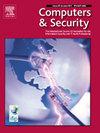LowPTor:用于检测极低比例暗网流量的轻量级方法
IF 4.8
2区 计算机科学
Q1 COMPUTER SCIENCE, INFORMATION SYSTEMS
引用次数: 0
摘要
近年来,暗网的可访问性显著增加,使其更容易受到网络犯罪分子的利用。暗网的高隐蔽性、强匿名性和抗追踪性等固有特点为非法活动提供了肥沃的土壤,这些活动正变得越来越普遍。深度学习模型在高维特征空间中的复杂计算导致了巨大的计算开销和较长的推理时间,阻碍了其在实时检测至关重要的骨干网络中的部署。应对这些挑战需要创新的解决方案来实现高效的流量采样、特征工程、模型简化、内存优化和推理加速。因此,本文引入了一种协同滤波算法、一种可扩展的信道特征组和一种轻量级检测算法,旨在通过算子融合和信道对齐来优化性能。该算法结合了轻量级cnn(卷积神经网络)的优势,利用GPU(图形处理单元)的并行性,减少了内存分配开销,从而形成了CUDA(计算统一设备架构)核心优化的神经网络模型,实现了显著的推理加速。利用基于短报文序列的可扩展信道特征组来提高检测精度。我们的方法目标是在连接阶段检测和预防非法暗网流量,而不是干扰数据传输。通过在协同过滤中集成基于规则的过滤和小流采样,我们促进了早期检测,同时保持了最小的复杂性开销。据我们所知,本文提出的方法是第一个基于运营商融合和信道对齐策略设计的方法,专门用于检测骨干网中极低比例的暗网流量。我们的方法综合了三个极低比例的暗网流量数据集,利用自建、CIC-Darknet2020和TCUB数据集作为Tor源。值得注意的是,与当前最先进的(SOTA)方法相比,我们的方法在保持SOTA检测精度的同时,实际推理时间减少了45.79%。此外,我们的方法显示出在不影响任何流的情况下过滤掉高达91.26%(最少78.01%)要处理的数据包的能力。本文章由计算机程序翻译,如有差异,请以英文原文为准。
LowPTor: A lightweight method for detecting extremely low-proportion darknet traffic
The darknet’s accessibility has increased significantly in recent years, making it more susceptible to exploitation by cybercriminals. The darknet’s inherent characteristics of high concealment, strong anonymity, and resistance to tracing have created a fertile ground for illicit activities, which are becoming increasingly prevalent. Deep learning models’ complex computations in high-dimensional feature spaces result in significant computational overhead and prolonged inference times, hindering their deployment in backbone networks where real-time detection is crucial. Dealing these challenges requires innovative solutions for efficient traffic sampling, feature engineering, model simplification, memory optimization and inference acceleration. Therefore, this paper introduces a collaborative filtering algorithm, an extensible channel-wise feature group, and a lightweight detection algorithm, designed to optimize performance through operator fusion and channel alignment. The proposed algorithm combines the advantages of lightweight CNNs (Convolutional Neural Networks), leverages GPU (Graphics Processing Unit) parallelism, and reduces memory allocation overhead, resulting in a CUDA (Compute Unified Device Architecture) core-optimized neural network model that achieves significant inference speedup. We utilize extensible channel-wise feature group derived from short traffic packet sequences to improve detection accuracy. Our approach targets the detection and prevention of illicit darknet traffic during the connection phase, rather than interfering with data transmission. By integrating rule-based filtering with small flow sampling within collaborative filtering, we facilitate early detection while maintaining minimal complexity overhead. To the best of our knowledge, the methodology proposed in this paper is the first to be designed based on operator fusion and channel alignment strategies, specifically aimed at detecting extremely low-proportion darknet traffic within backbone networks. Our approach synthesizes three extremely low-proportion darknet traffic datasets, utilizing the self-built, CIC-Darknet2020, and TCUB datasets as Tor sources. Notably, our approach achieves a 45.79% reduction in actual inference time compared to current state-of-the-art (SOTA) method, while maintaining SOTA detection accuracy. Furthermore, our method exhibits the capability to filter out up to 91.26% (with a minimum of 78.01%) of the packets to be processed, without compromising any flows.
求助全文
通过发布文献求助,成功后即可免费获取论文全文。
去求助
来源期刊

Computers & Security
工程技术-计算机:信息系统
CiteScore
12.40
自引率
7.10%
发文量
365
审稿时长
10.7 months
期刊介绍:
Computers & Security is the most respected technical journal in the IT security field. With its high-profile editorial board and informative regular features and columns, the journal is essential reading for IT security professionals around the world.
Computers & Security provides you with a unique blend of leading edge research and sound practical management advice. It is aimed at the professional involved with computer security, audit, control and data integrity in all sectors - industry, commerce and academia. Recognized worldwide as THE primary source of reference for applied research and technical expertise it is your first step to fully secure systems.
 求助内容:
求助内容: 应助结果提醒方式:
应助结果提醒方式:


